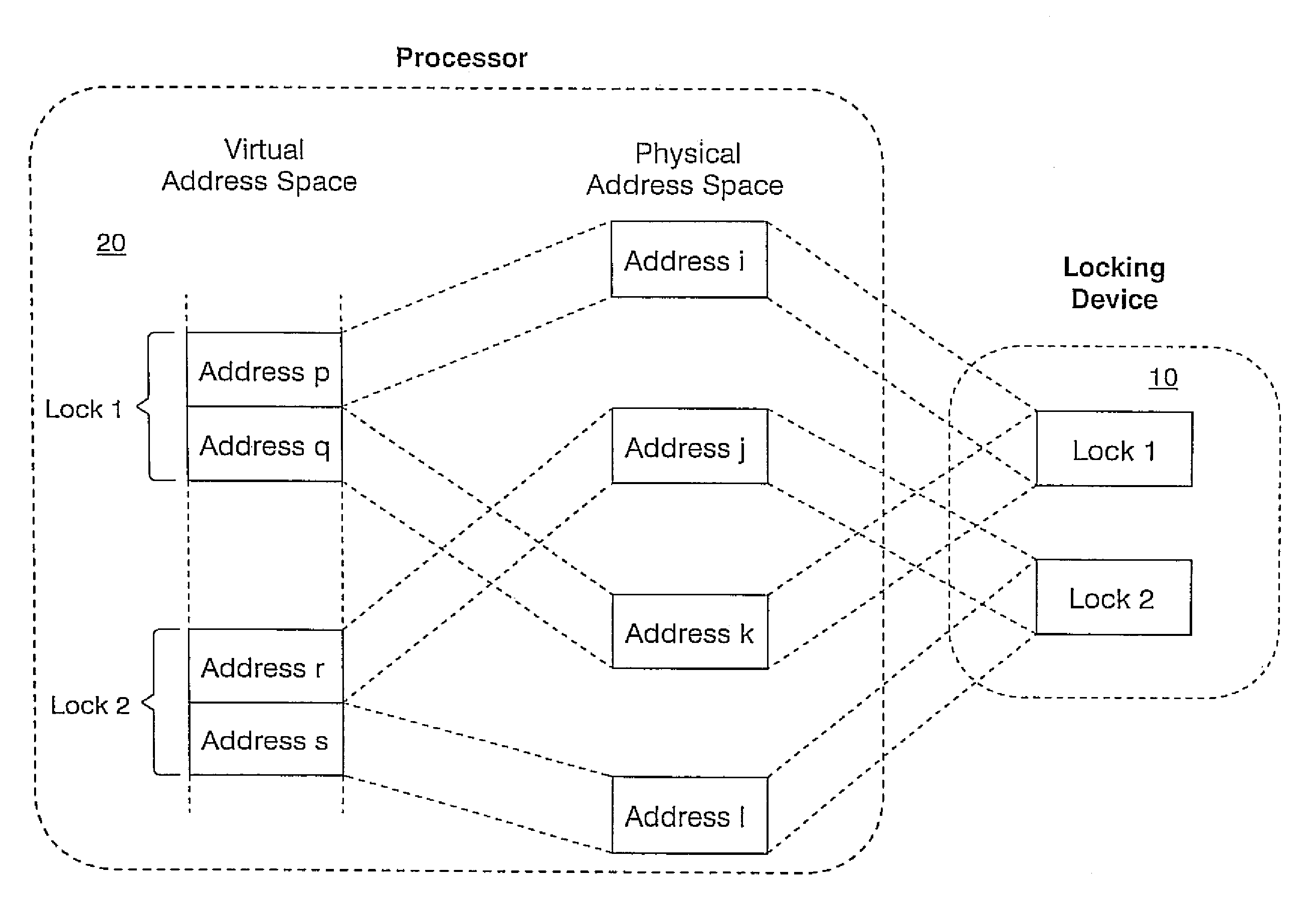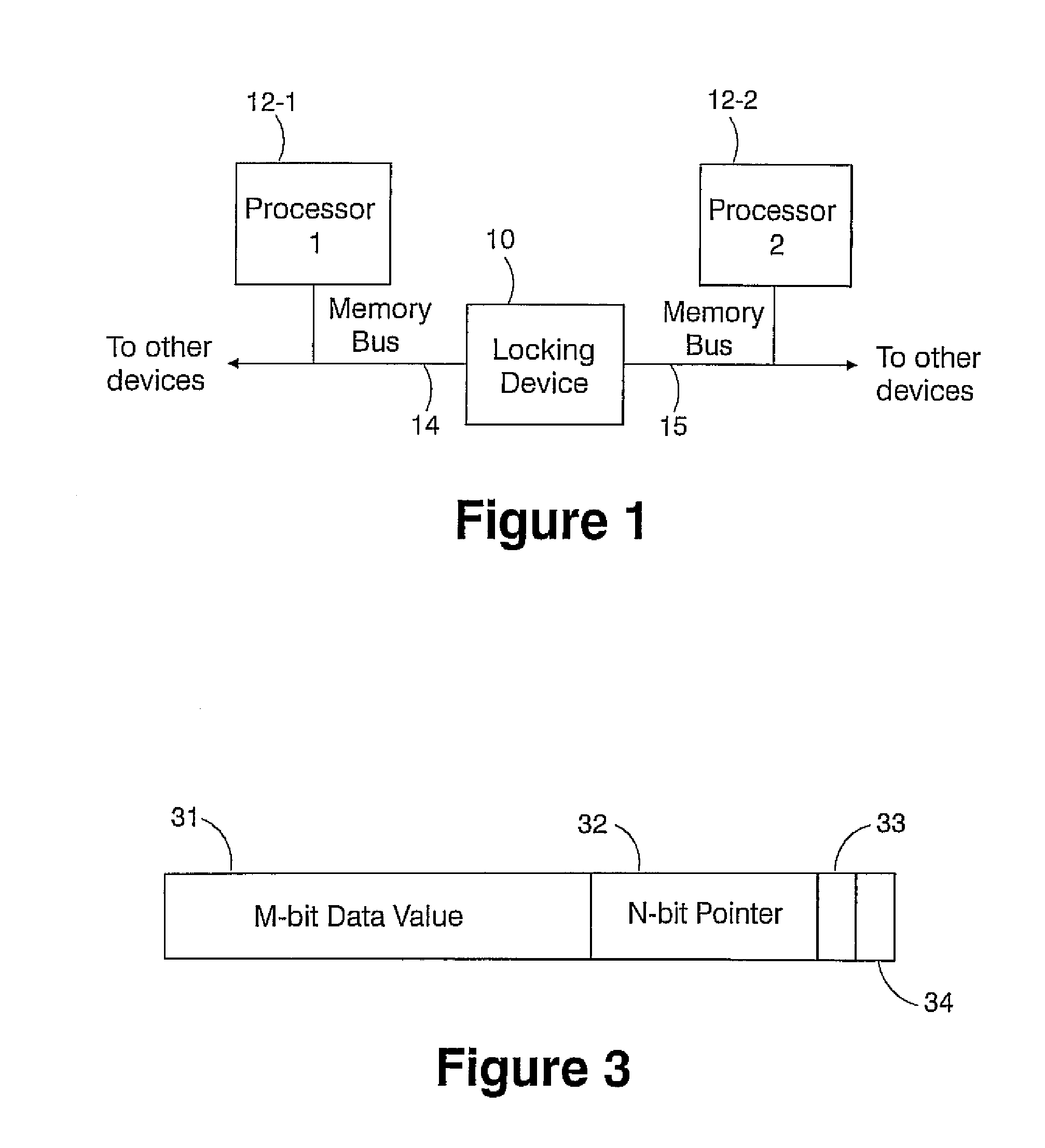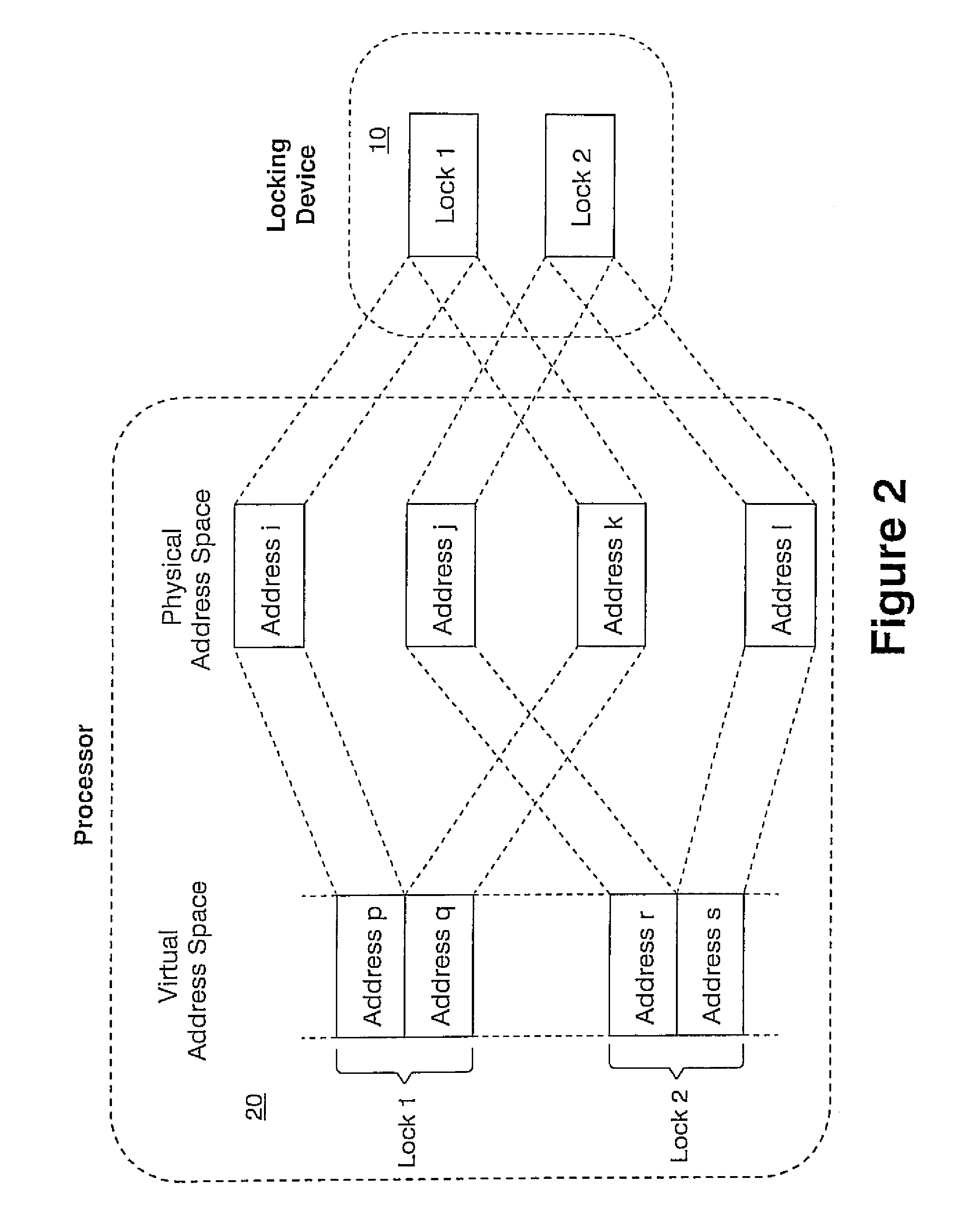Method for prefetching non-contiguous data structures
a non-contiguous data structure and memory technology, applied in the field of low latency memory system, can solve the problems of difficult prediction, high repetition of many applications, and orderly sharing of resources, and achieve the effect of effectively pre-fetching memory access patterns
- Summary
- Abstract
- Description
- Claims
- Application Information
AI Technical Summary
Benefits of technology
Problems solved by technology
Method used
Image
Examples
Embodiment Construction
[0024]A multiprocessor on a chip offers an opportunity to improve the performance of locking by including custom hardware to implement the locks. This hardware can be located near the processors, such as between the individual processors, resulting in extremely low latency access. Furthermore, locks can be implemented that do not require the atomic (performed without interruption) read-modify-write (RMW) operation, but work with ordinary loads and stores.
[0025]The present invention is being developed in association with a multiprocessor system-on-chip (SOC) cache structure. The multiprocessor system includes two CPU cores, each having an internal first-level cache, wherein each processor has separate write and read buses which operate relatively independently. It should be understood that the present invention will work with more than two CPU cores.
[0026]The present invention provides a hardware locking device that provides support for synchronization between multiple processors in ...
PUM
 Login to View More
Login to View More Abstract
Description
Claims
Application Information
 Login to View More
Login to View More - R&D
- Intellectual Property
- Life Sciences
- Materials
- Tech Scout
- Unparalleled Data Quality
- Higher Quality Content
- 60% Fewer Hallucinations
Browse by: Latest US Patents, China's latest patents, Technical Efficacy Thesaurus, Application Domain, Technology Topic, Popular Technical Reports.
© 2025 PatSnap. All rights reserved.Legal|Privacy policy|Modern Slavery Act Transparency Statement|Sitemap|About US| Contact US: help@patsnap.com



